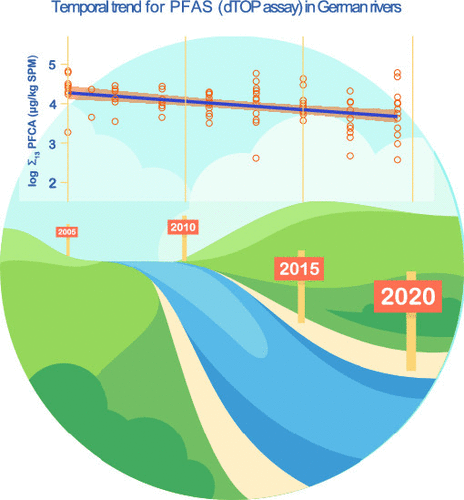Long-Term Trends of Per- and Polyfluoroalkyl Substances (PFAS) in Suspended Particular Matter from German Rivers Using the Direct Total Oxidizable Precursor (dTOP) Assay
Göckener, Bernd; Fliedner, Annette; Rüdel, Heinz; Badry, Alexander; Koschorreck, Jan
Environmental Science & Technology 56 (2022), 1, 208-217; online 15 December 2021
Abstract
Suspended particulate matter (SPM) from 13 riverine sampling sites of the German Environmental Specimen Bank collected between 2005 and 2019 was retrospectively investigated for per- and polyfluoroalkyl substances (PFAS). The samples were analyzed both by target analysis for 41 PFAS and by a modified total oxidizable precursor (dTOP) assay to capture also unknown precursors. Temporal trends and spatial differences were investigated by generalized linear modeling (GLM). Time trend analysis across all rivers showed decreasing trends for ∑PFCA and ∑PFSA concentrations in SPM. Trends based on target analysis (∑PFCAtarget: −10.0%, ∑PFSAtarget: −8.2%) were more pronounced than in the dTOP analysis (∑PFCAdTOP: −4.2%; ∑PFSAdTOP: −5.3%), suggesting that conventional target analysis overestimated actual decreases as precursors are not considered. ∑PFAS concentrations determined by dTOP assay were 1.3–145 times higher as compared to target analysis, indicating substantial amounts of unknown precursors in the samples. The ∑PFASdTOP/∑PFAStarget ratio increased at all sites between 2005 and 2019. Contamination was highest in SPM from the Elbe tributary Mulde downstream of a large industrial park. The results underscore the need to go beyond conventional target analysis and include precursors when assessing PFAS contamination in the environment. The dTOP assay is a suitable tool for this purpose.
